Modern USB Data Sticks don’t seem to come with external antenna jacks these days. This is a real shame for geeks like me who want better signals and are prepared to procure external antennas to ensure high quality signals.
This project is to ensure that we can have 24 x 7 comms on the boat this summer without resorting to hanging USB modems out of portholes. Metal, as most people know, shields RF extremely well so external antennas are the only way to go. I have already made the necessary internal IT mods to the boat to ensure we have connectivity with a new Dell machine and a wireless router, shared on one of the ethernet ports. A second ethernet card connects to the router as a client to put the Dell back on the corrrect subnet as the rest of the wireless laptops (which are on the “wrong” side of the router). A spin off to all this is that our Orange Blackberry’s will connect to the router, delivering a UMA connection meaning that we will have at least four devices connected internally. Voice calls will be almost impossible via UMA unless we have a very smart connection.
Learning from a mutual friend of mine currently travelling from Alaska to Japan on his Nordhavn, we will share out our WiFi connection with our convoy and friends who we will meet along the way. And why not 🙂
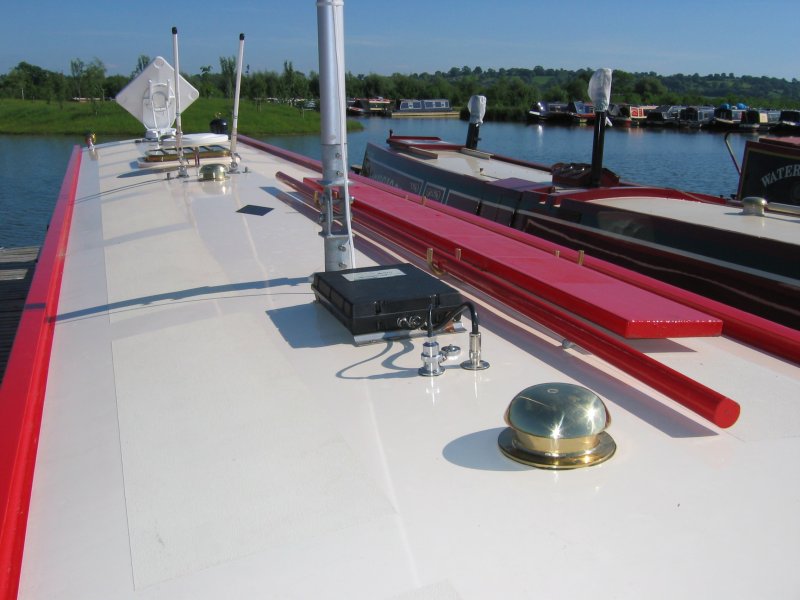 Of course, I already have a good 2.4Ghz antenna for the reception of WiFi signals and this will remain connected to the Dell’s WiFi card if (and when) we manage to secure a good quality marina WiFi signal but the USB stick will supply almost as good as home broadband, depending on availability. Some people will know that I have a deep knowledge of WiFi security auditing and I will, as a matter of course “test” out the security of most of the WiFi hotspots we happen to come across as part of my learnings. And if you believe that, you’ll believe anything.
Of course, I already have a good 2.4Ghz antenna for the reception of WiFi signals and this will remain connected to the Dell’s WiFi card if (and when) we manage to secure a good quality marina WiFi signal but the USB stick will supply almost as good as home broadband, depending on availability. Some people will know that I have a deep knowledge of WiFi security auditing and I will, as a matter of course “test” out the security of most of the WiFi hotspots we happen to come across as part of my learnings. And if you believe that, you’ll believe anything.
Anyway, I digress. What I needed was the facility to have good signal strength to the Huawei E220, hence this successful antenna mod.
If you came here from Google, you will want to know the ins-and-outs. I can tell you this is a genuinely very easy mod if you have prepared all your tools and have an hour to play with. Like all modification projects, the key is not to rush.
First, lever off the protective branded cover. I used a sharp knife to start breaking the sticky seal. Be carefull you don’t cut yourself. It comes off quite easily with a sort of unsticking sound. Ignore the little tab at one end, it’s only a positional tab and doesn’t do anything mechanical.
Next, observe the very small Torx style screw that holds the covers together. Initially, you might find they are covered in a sticky paper washer affair, this is just the remnants of the branded cover. Pick them out with a sharp knife.
Now, even my very tiny, small torx screwdriver didn’t manage to uncrew these torx screws, I reverted to using a tiny jewellers screwdriver which just managed to catch the sides of the Torx screw head and I carefully unscrewed it. I have read that some people have just snapped the case open but I wanted to keep it all in one piece. If you can find a teeny-weeny screwdriver, it is worth trying to get this out.
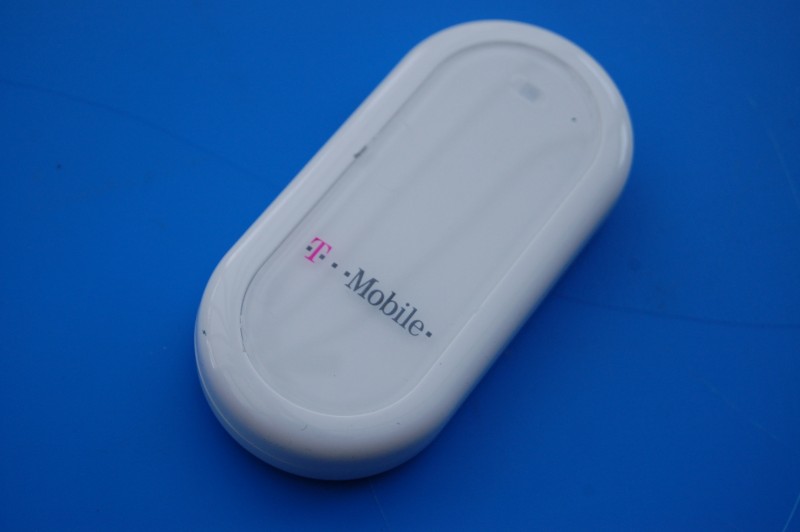
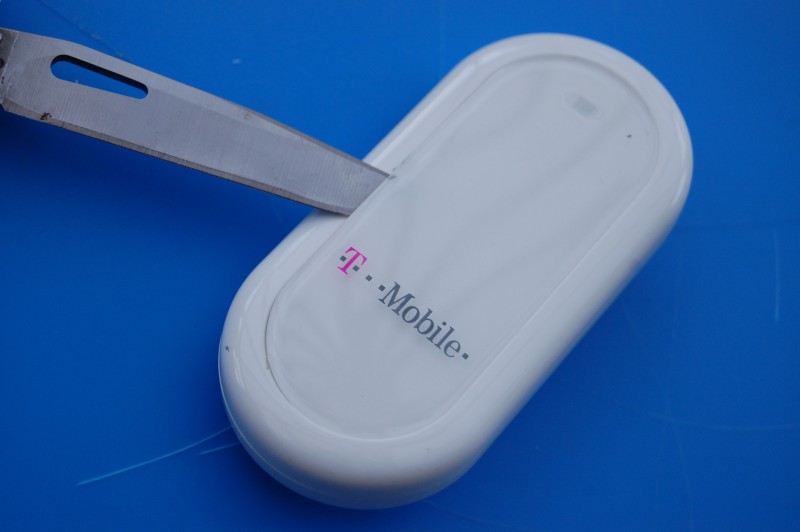
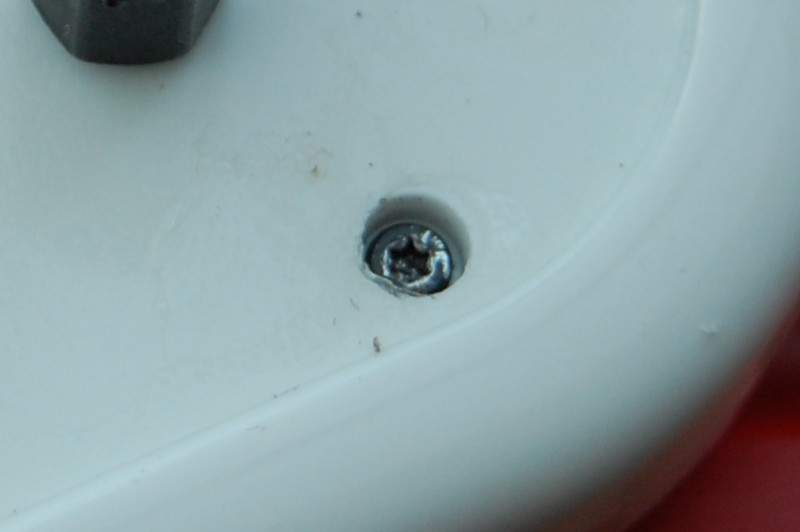
Next, I took out the SIM card and put a very large screwdriver blade inside the opening and started to snap all the mechanical catches apart. Within a few seconds, I had this apart – it is not difficult. Just be careful and work steadily. You don’t need to be strong, just work slowly.
You will see when the device is apart, a weird antanna located opposite the USB connector built around some clear perspex type material. Again, this comes off with the same tiny screwdriver you managed to open the case with via the two torx screws each side of the antenna. I suppose if you had to, you could break this antenna off to do this mod but frankly, if you are a technical sort of person, you should have a teeny screwdriver capable of fitting this torx screw. They came out pretty easily.
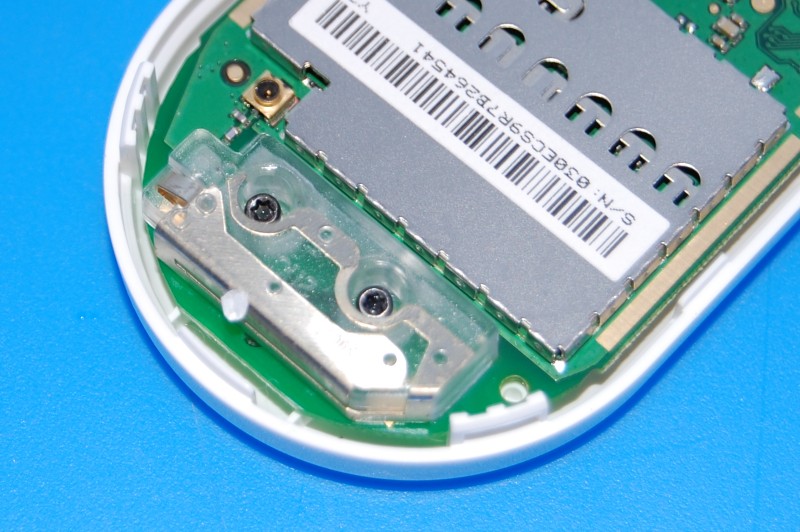
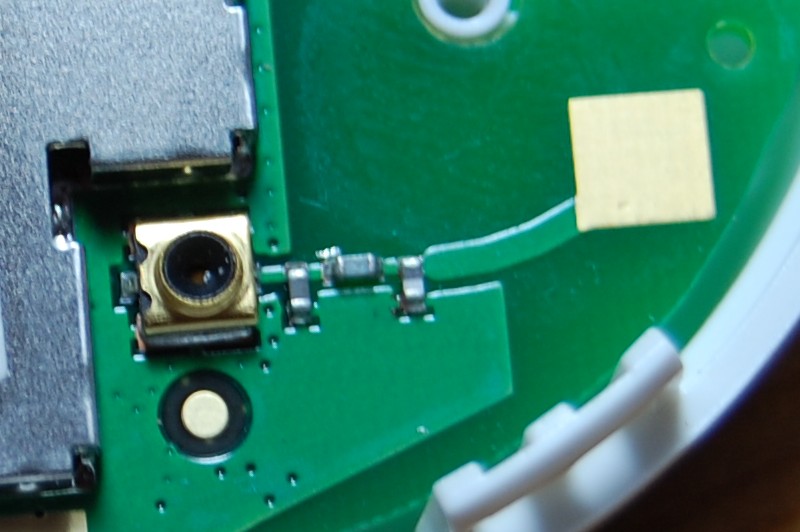
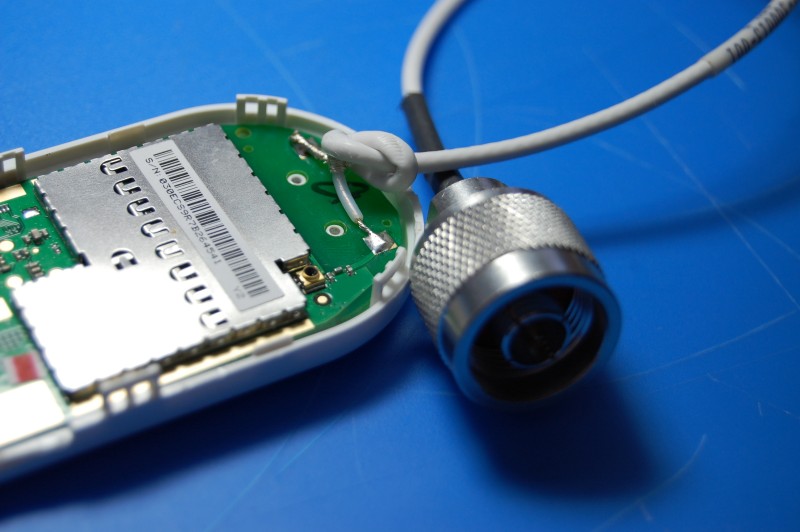
For the technical antenna people reading this, I found this antenna really cute. A quarter-wave at 1.9Ghz is around 4cms which is precisely how big the main element is however there seems to be a matching stub or similar very close to the main element. To start with, I thought this was a separate antenna similar to a fan dipole but the jury’s out since this would mean it also operates at around 4 Ghz, way off I think. Upon reflection, the design seems to be a folded monopole fed against the chasis ground – although the smaller antenna next to the main element is a bit weird. If you know how this works, I’d be keen to understand. Please let me know. The only thing I didn’t work out is the soldered ground I used. Is the ground tag that I soldered actually connected to the chassis ground? I don’t know. Perhaps I need to make some checks. If you know, please contact me with details.
Soldering the RG174 was pretty easy and after I had created a cable exit route with a small heated screwdriver that melted the plastic, everything came together. In the end, I didn’t use the torx screw to put it back together. Instead I just used the clips which will mean if I have to maintain this in the future, life will be a little easier.
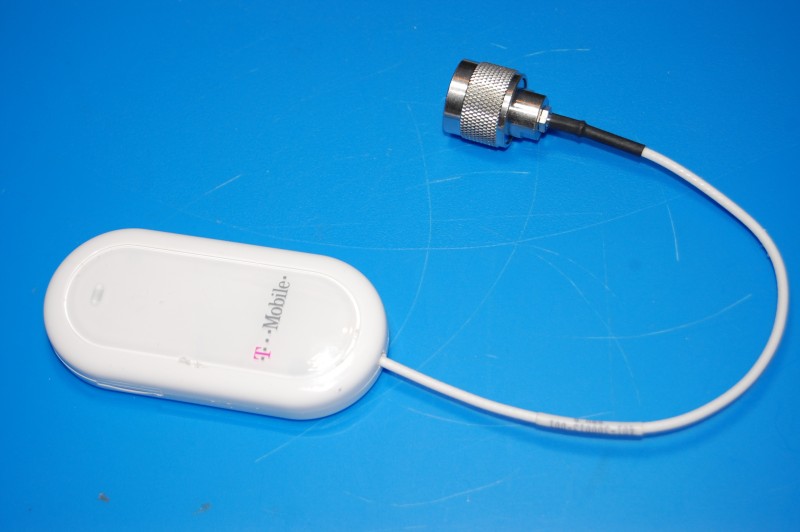
The outcome is good although I have not used this on the right frequency antenna yet. On the boat, I have a dual band cellular antenna which is 60cms long and will display enormous gain (considering a quarter wave is 4 cms). Working through HSDPA specs, I will achieve almost a perfect match with my transmit signal at or around 1.9Ghz and my receive signal, at just under 2.2Ghz should be a fairly easy trip (HSDPA had uplink and downlink frequencies).
My cellular antenna will therefore be transmitting perfectly although receive may be slightly attenuated due to the narrow bandwidth these cellular antennas display.
However, here’s the worst case scenario: Tonight, I used a WiFi antenna as a benchmark and achieved 2 bars using the T Mobile (Huawei provided) software. Considering that a 2.4Ghz antenna is a terrible match, I am happy that this will perform as planned on the boat.
Before I sign off, I hear you ask; “Where did you get the RG174 and matching N-Type”? Seemples; I bought an SMA to N-Type pigtail and cut the SMA off.
All in all, a successful project. I’m very pleased.
(2 days later: I’m currently on the boat connected via this external antenna pigtail to the dual-band cellular antenna, connected at 3.6Mbps. I’m very pleased!)
C.
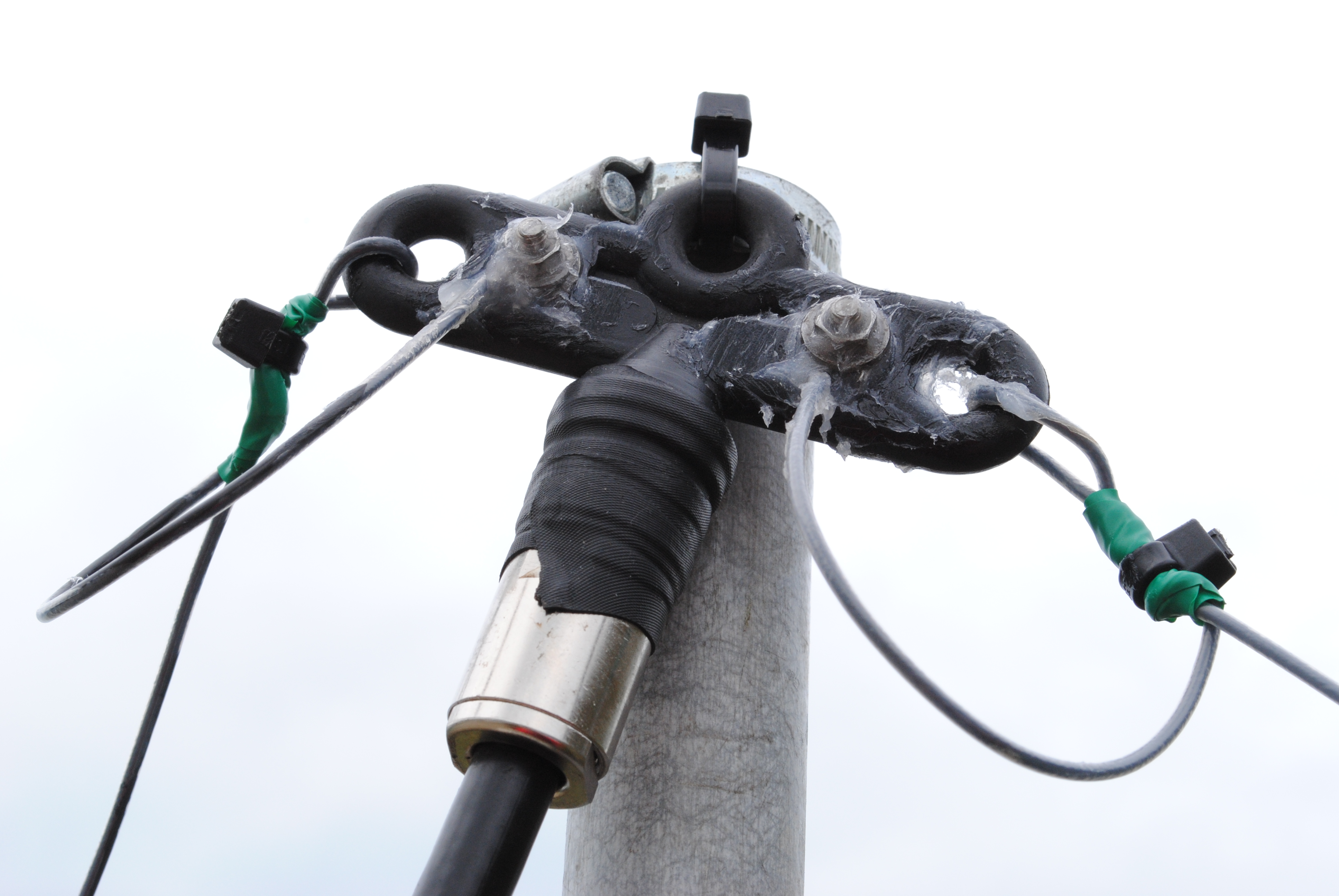 I used to use self-amalgamating tape for Field Days but the effort in applying and removing it forced me to rethink. I started using high quality insulation tape instead – the stuff that has some nice stretch and doesn’t go brittle in the cold. This worked for many years. Unfortunately, the cheap stuff, from say Maplins might have the required insulation properties but has a brittle plastic feel and not very pliable – it’s certainly difficult to make waterproof between layers. Last time out for Wythall Radio Club SSB Field Day, torrential rain found its way through a crack between two layers of tape and the SWR went high.
I used to use self-amalgamating tape for Field Days but the effort in applying and removing it forced me to rethink. I started using high quality insulation tape instead – the stuff that has some nice stretch and doesn’t go brittle in the cold. This worked for many years. Unfortunately, the cheap stuff, from say Maplins might have the required insulation properties but has a brittle plastic feel and not very pliable – it’s certainly difficult to make waterproof between layers. Last time out for Wythall Radio Club SSB Field Day, torrential rain found its way through a crack between two layers of tape and the SWR went high.


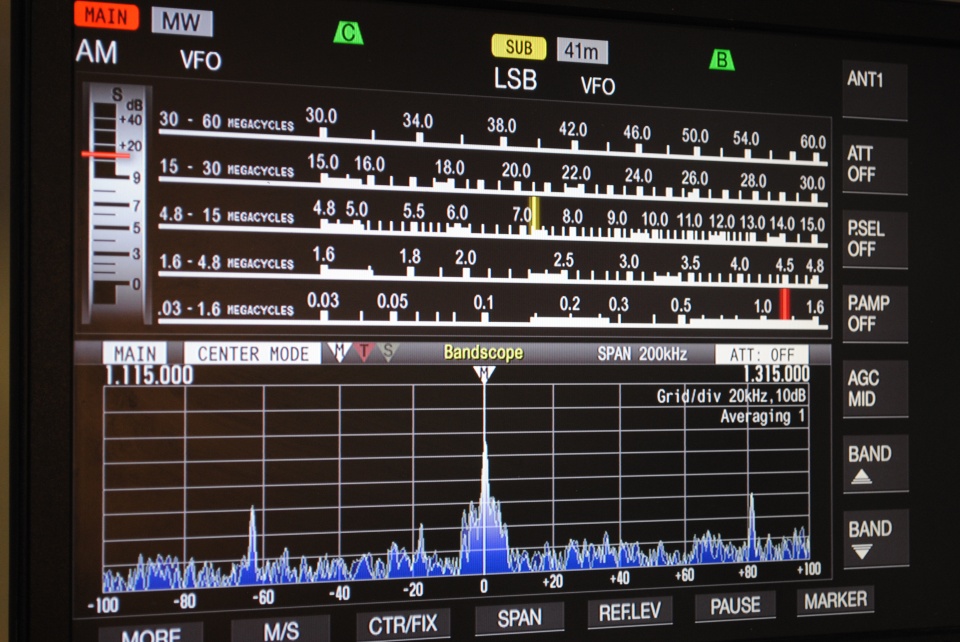
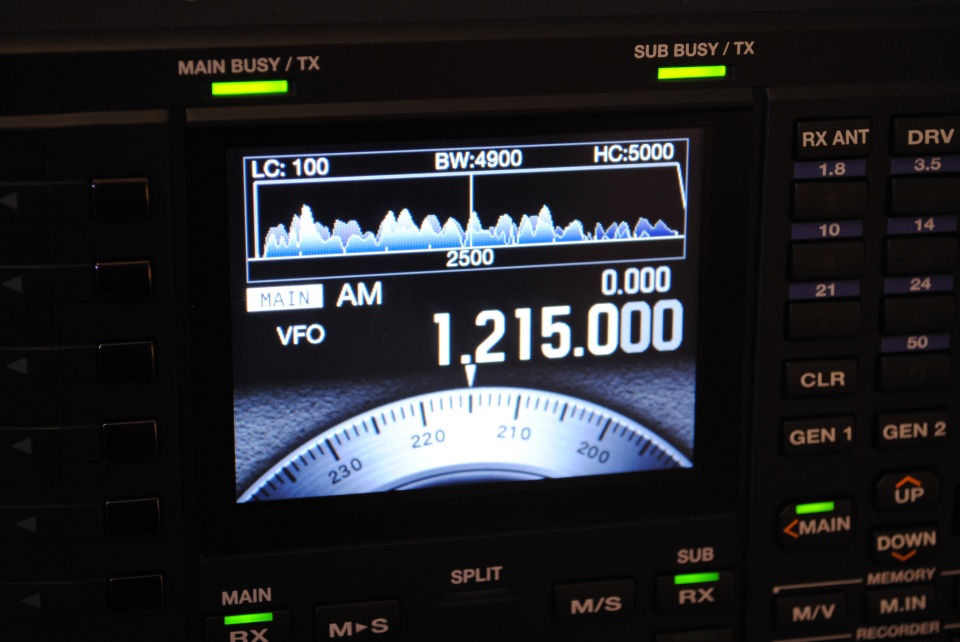
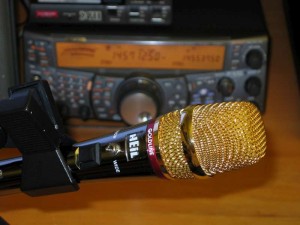
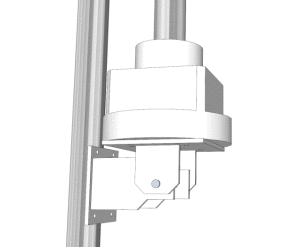 (Note, this product is at the “enquiry” level, it is not a stock part from Barenco)
(Note, this product is at the “enquiry” level, it is not a stock part from Barenco)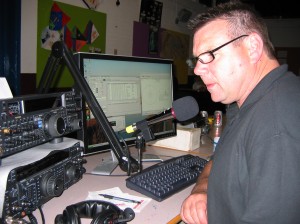
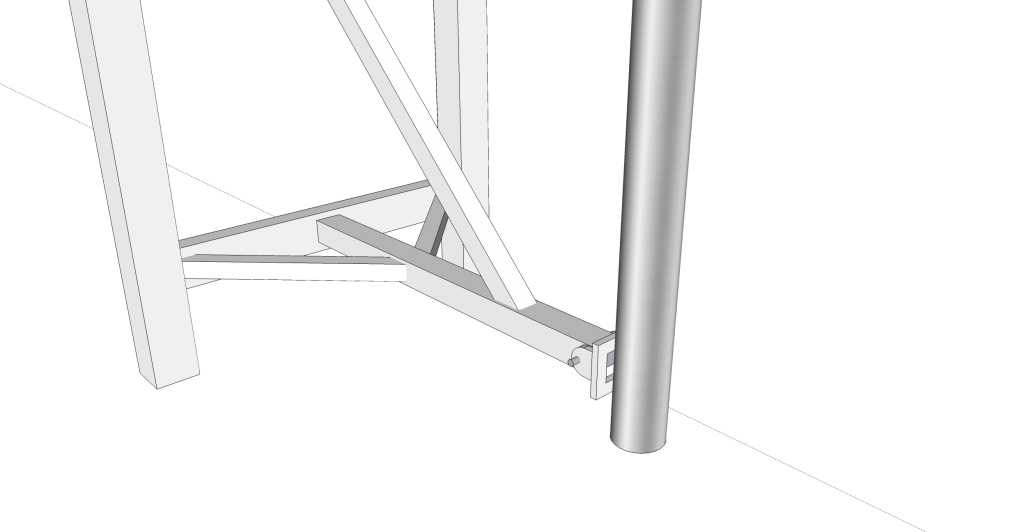 I was just about to bite the bullet to install an 18 inch overhang T & K bracket system from Barenco when James M0YOM called for a scaffolder to take his down because the brickwork was coming loose on the top bracket.
I was just about to bite the bullet to install an 18 inch overhang T & K bracket system from Barenco when James M0YOM called for a scaffolder to take his down because the brickwork was coming loose on the top bracket.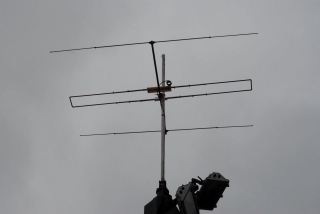
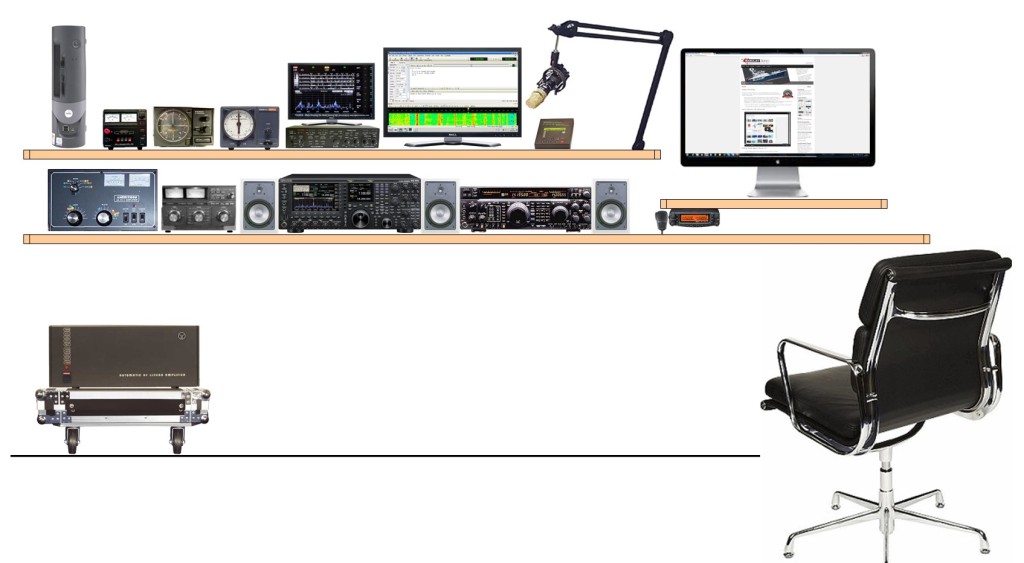

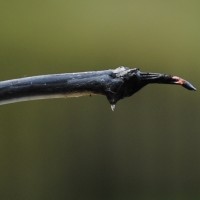
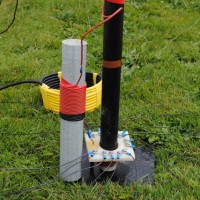
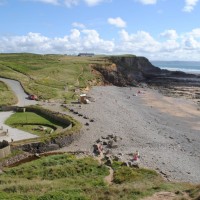 Here’s a new one that you wouldn’t read in the books.
Here’s a new one that you wouldn’t read in the books.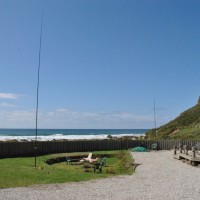
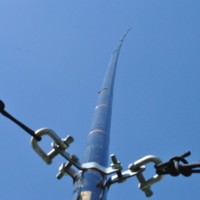










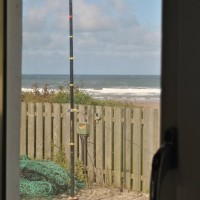 With my recent success at building fan dipoles that are more “nested” than “fan”, I saw no reason why I couldn’t put up more than one element on my 20m band vertical to achieve a match on 10m. I ran up a 2.4m length of D10 comms wire up the side of the pole, around 2 inches away from the 20m quarter wave element. After trimming a few centimeters here and there, it tuned it at 1.3:1 SWR and all was well.
With my recent success at building fan dipoles that are more “nested” than “fan”, I saw no reason why I couldn’t put up more than one element on my 20m band vertical to achieve a match on 10m. I ran up a 2.4m length of D10 comms wire up the side of the pole, around 2 inches away from the 20m quarter wave element. After trimming a few centimeters here and there, it tuned it at 1.3:1 SWR and all was well.








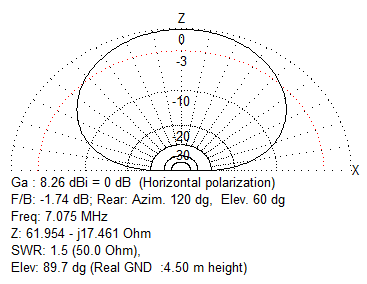 I check into the HamAntennas Yahoo Group fairly often and it occurs to me that collectively, there seems to be a lot of smoke and mirrors surrounding the design of low-band antennas and everyone seems to forget the basic principles, that low-to-the-ground antennas will form bubbles of RF above you. We call them NVIS or Cloud Burner antennas. The graphic is a plot of my home-brew 40m loop in the garden from MMANA. It’s 25 feet above the ground (which is exactly the same far-field plot as an 80m loop at 50 feet). Clearly it’s going to work well at what it’s designed for. Up to about 1,500 miles. In practice, it conforms precisely to my software plot.
I check into the HamAntennas Yahoo Group fairly often and it occurs to me that collectively, there seems to be a lot of smoke and mirrors surrounding the design of low-band antennas and everyone seems to forget the basic principles, that low-to-the-ground antennas will form bubbles of RF above you. We call them NVIS or Cloud Burner antennas. The graphic is a plot of my home-brew 40m loop in the garden from MMANA. It’s 25 feet above the ground (which is exactly the same far-field plot as an 80m loop at 50 feet). Clearly it’s going to work well at what it’s designed for. Up to about 1,500 miles. In practice, it conforms precisely to my software plot.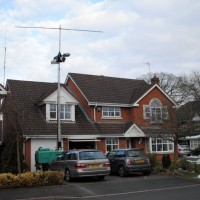
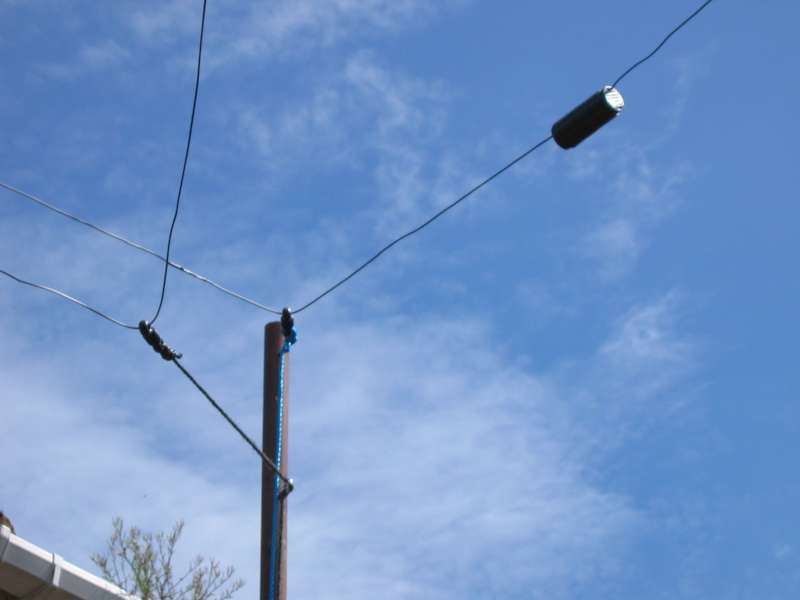 I’ve been an addict of full wave (and partial wave) loops since realising many years ago that in comparison to a dipole, you get more bang for your buck if you build a loop – certainly you get more copper in the air – and loops are resonant on EVERY harmonic so a 40m loop will be resonant on 20, 15m and 10m. A multi-band antenna for peanuts. They will receive better too, so for a housing estate, these are mandatory.
I’ve been an addict of full wave (and partial wave) loops since realising many years ago that in comparison to a dipole, you get more bang for your buck if you build a loop – certainly you get more copper in the air – and loops are resonant on EVERY harmonic so a 40m loop will be resonant on 20, 15m and 10m. A multi-band antenna for peanuts. They will receive better too, so for a housing estate, these are mandatory.
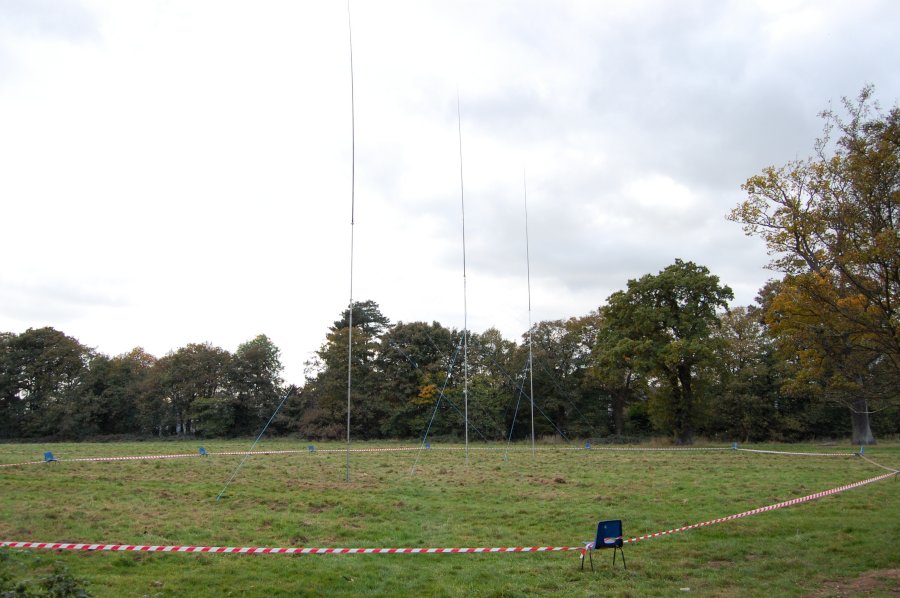
 You will now have a structure that is effectively 20 meters tall (65 feet). Now then, the fishing pole blank will become the vertical part of an antenna which happens to be a quarter wave for 40 meter band. Being a raised antenna, we need radials and since we’re closer to the ground than a wavelength, we need a more than the traditional two radials to counteract the ground losses. We decided that 8 x radials will be about as good as 60 or so regular ground mounted radials. Do we have the maths right? We think so.
You will now have a structure that is effectively 20 meters tall (65 feet). Now then, the fishing pole blank will become the vertical part of an antenna which happens to be a quarter wave for 40 meter band. Being a raised antenna, we need radials and since we’re closer to the ground than a wavelength, we need a more than the traditional two radials to counteract the ground losses. We decided that 8 x radials will be about as good as 60 or so regular ground mounted radials. Do we have the maths right? We think so. Today, we did all the hard engineering and measured out all the bits and pieces, ready for a trial the week before CQWW. James and I laughed at the thought of how big this monster really is – and then wondered if it actually fit inside the park so as not to distrupt the walklers? Thank goodness we checked. For those of you unlucky enough to have been to our Scout Hut, you will know that when leaving our front doors, you will notice an oak tree in the distance that houses one corner of our mega-loop. James and I measured from the grass outside the doors to the last radial and we were only about 5 meters from the oak tree. Bloody hell!
Today, we did all the hard engineering and measured out all the bits and pieces, ready for a trial the week before CQWW. James and I laughed at the thought of how big this monster really is – and then wondered if it actually fit inside the park so as not to distrupt the walklers? Thank goodness we checked. For those of you unlucky enough to have been to our Scout Hut, you will know that when leaving our front doors, you will notice an oak tree in the distance that houses one corner of our mega-loop. James and I measured from the grass outside the doors to the last radial and we were only about 5 meters from the oak tree. Bloody hell!


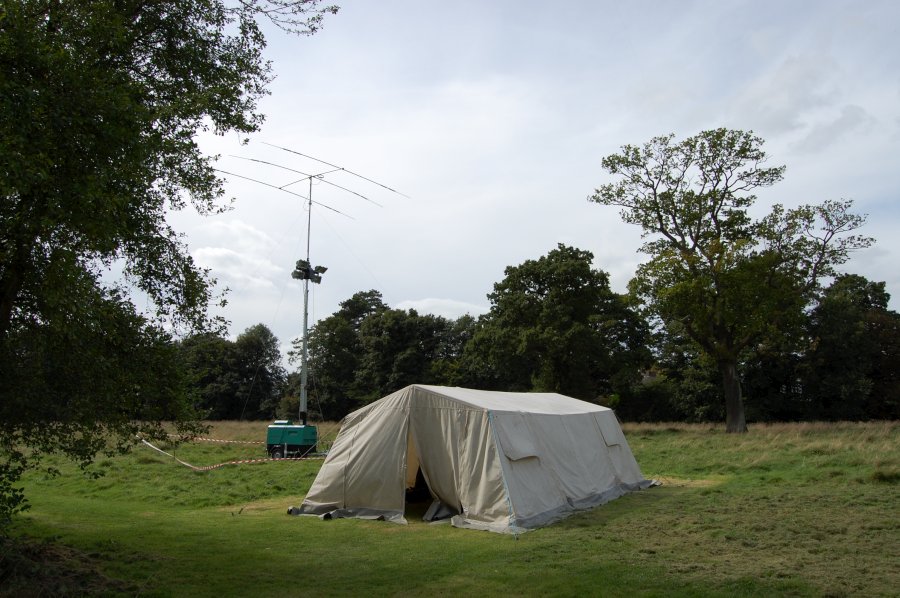 Field days seem to whoosh by in a seamless tirade of bodily abuse that starts in the balls of the feet, grows through your hands and wind blown cheeks before reminding you that you are starving hungry and you’ve only just taken over the driving seat.
Field days seem to whoosh by in a seamless tirade of bodily abuse that starts in the balls of the feet, grows through your hands and wind blown cheeks before reminding you that you are starving hungry and you’ve only just taken over the driving seat.















 Of course, I already have a good 2.4Ghz antenna for the reception of WiFi signals and this will remain connected to the Dell’s WiFi card if (and when) we manage to secure a good quality marina WiFi signal but the USB stick will supply almost as good as home broadband, depending on availability. Some people will know that I have a deep knowledge of WiFi security auditing and I will, as a matter of course “test” out the security of most of the WiFi hotspots we happen to come across as part of my learnings. And if you believe that, you’ll believe anything.
Of course, I already have a good 2.4Ghz antenna for the reception of WiFi signals and this will remain connected to the Dell’s WiFi card if (and when) we manage to secure a good quality marina WiFi signal but the USB stick will supply almost as good as home broadband, depending on availability. Some people will know that I have a deep knowledge of WiFi security auditing and I will, as a matter of course “test” out the security of most of the WiFi hotspots we happen to come across as part of my learnings. And if you believe that, you’ll believe anything.






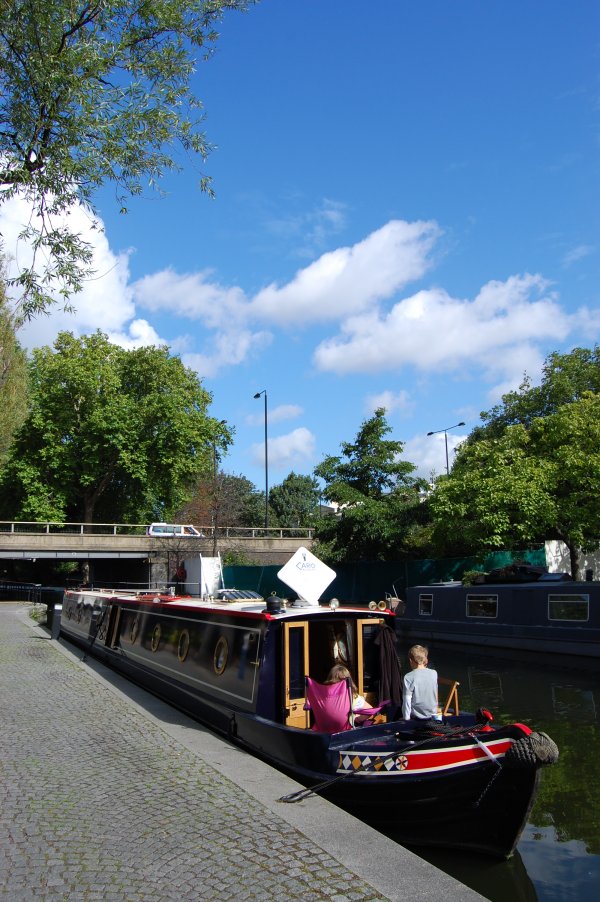 I get an email at about once a week from various members of the NordhavnDreamers group asking me more about our narrowboat which we use on the Inland Waterways of the UK. I find myself repeating myself every couple of weeks, so perhaps a high-quality post here will put your taste buds at ease.
I get an email at about once a week from various members of the NordhavnDreamers group asking me more about our narrowboat which we use on the Inland Waterways of the UK. I find myself repeating myself every couple of weeks, so perhaps a high-quality post here will put your taste buds at ease.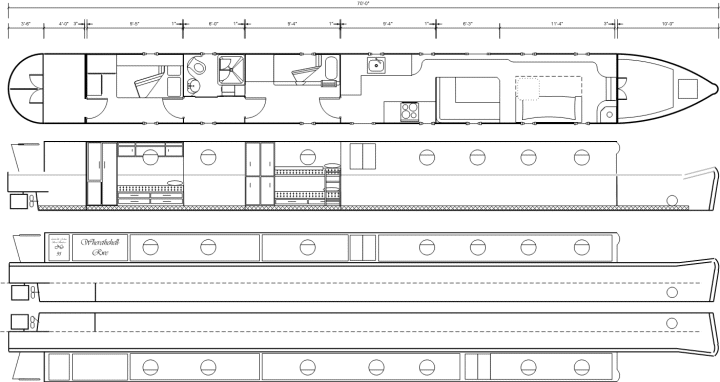
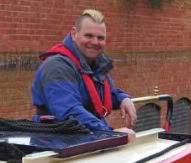
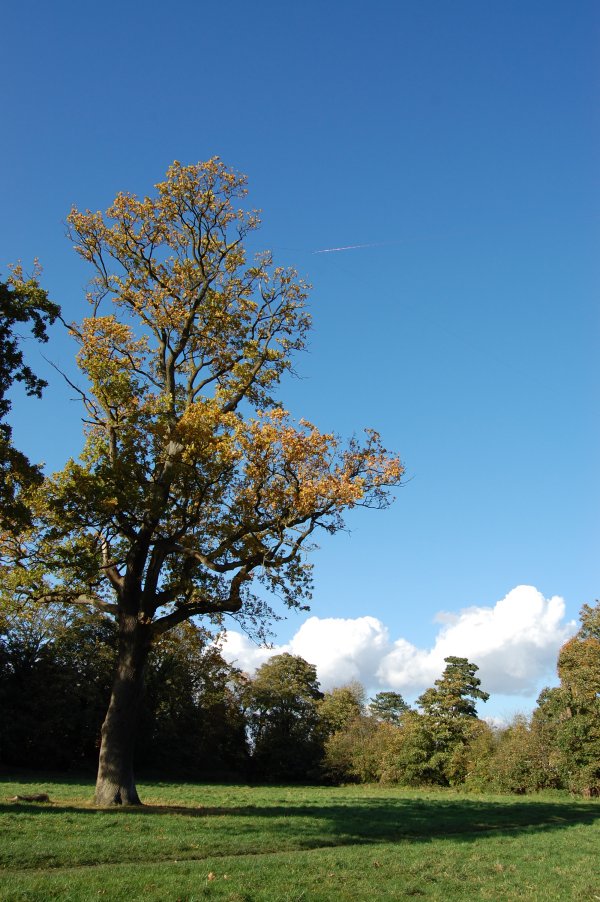 I’m currently writing an article outlining the characteristics of the Mega Loop antenna we use for Dorridge Scouts. If you would like a preview of this white-paper, please let me know.
I’m currently writing an article outlining the characteristics of the Mega Loop antenna we use for Dorridge Scouts. If you would like a preview of this white-paper, please let me know.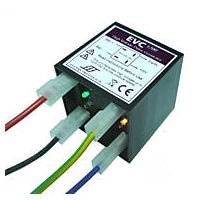 Technology came to the rescue. I found on ebay a most excellent toy, a 12 volt electric fence energiser that delivers 1,200 volts in 1 second intervals as well as an instant shock the moment you touch it. All I had to do was design the fence so that only the top was electrified (live). This was slightly complex since to make any sort of circuit, one needs a live and an earth. I ran a new earth line right across the top of the fence posts as the earth and then just above that (about an inch), I ran a clean live wire from the energiser, insulated from earth. Bottom line is that tonight, they finally all went into the house, but not before they had most enthusiastic sing-along as they tried in turn to do their usual trick of flying (jump-flapping?) up to the fence. Every second, the energiser blasted out a little wiggle of electricity and each time, the chicken’s feet got a little blast and they squawked (loudly) before jumping back down to the ground. Well, in the main that’s what happened but two of the birds jumped down wrong side, but we’ve “cured” them without resorting to 6-foot fencing which would look out of place in out trim and tidy English lawn.
Technology came to the rescue. I found on ebay a most excellent toy, a 12 volt electric fence energiser that delivers 1,200 volts in 1 second intervals as well as an instant shock the moment you touch it. All I had to do was design the fence so that only the top was electrified (live). This was slightly complex since to make any sort of circuit, one needs a live and an earth. I ran a new earth line right across the top of the fence posts as the earth and then just above that (about an inch), I ran a clean live wire from the energiser, insulated from earth. Bottom line is that tonight, they finally all went into the house, but not before they had most enthusiastic sing-along as they tried in turn to do their usual trick of flying (jump-flapping?) up to the fence. Every second, the energiser blasted out a little wiggle of electricity and each time, the chicken’s feet got a little blast and they squawked (loudly) before jumping back down to the ground. Well, in the main that’s what happened but two of the birds jumped down wrong side, but we’ve “cured” them without resorting to 6-foot fencing which would look out of place in out trim and tidy English lawn.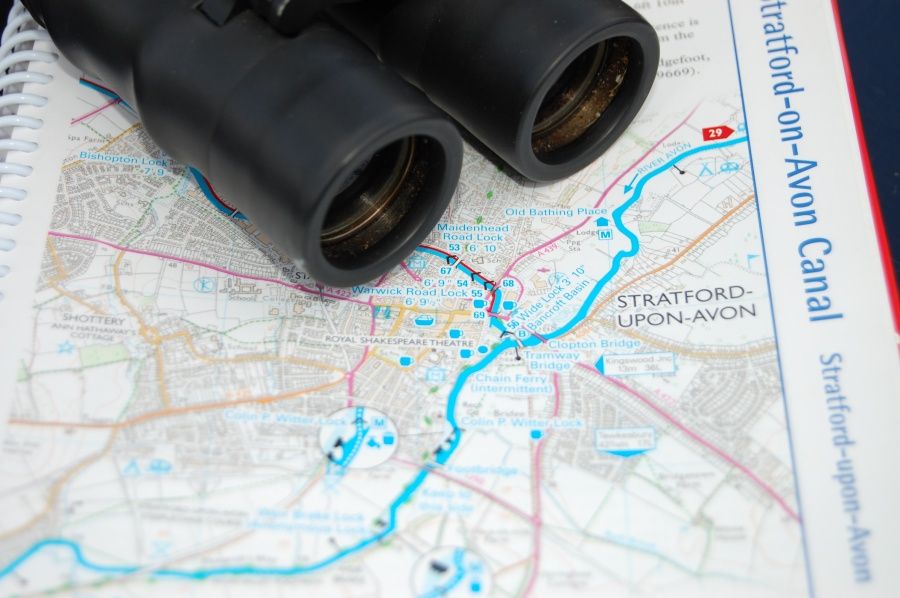 With the kids having a couple of weeks off, we thought up a new trip and ventured from Calcutts to Stratford. We didn’t make it all the way back and have dropped the boat down by Knowle locks for a few days whilst I work out when I’m going to take it “home”.
With the kids having a couple of weeks off, we thought up a new trip and ventured from Calcutts to Stratford. We didn’t make it all the way back and have dropped the boat down by Knowle locks for a few days whilst I work out when I’m going to take it “home”.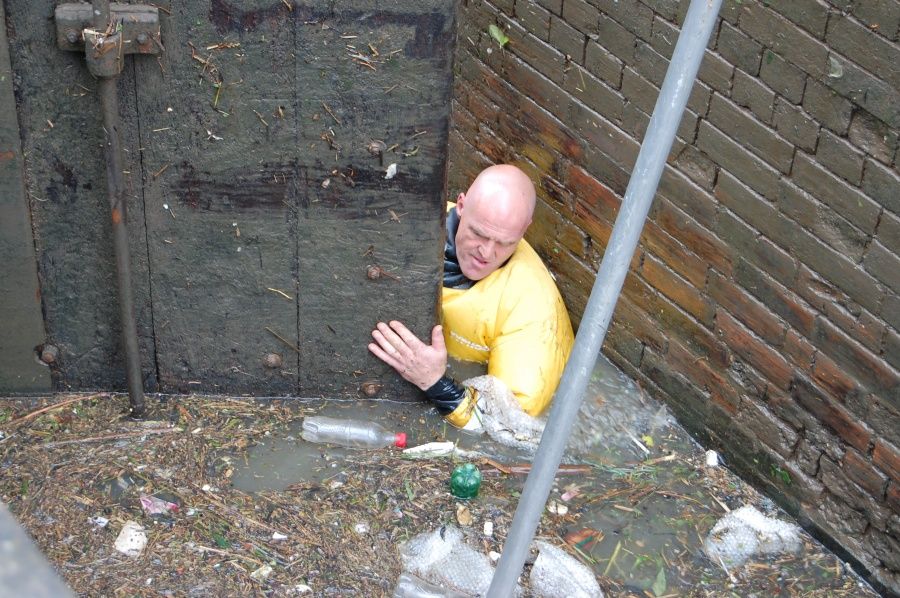 We had one incident with the last lock gate on the last lock on the Stratford. The bloody gate wouldn’t close completely. I sat there in the boat waiting for Wendy to open the gate and nothing. I shouted across the pound what was the problem. She just said it filling slowly. Clearly there was an issue though since it just wouldn’t fill and when I decided to pull over, I was grounding – an indication that we’d nearly emptied the damned pound! A good old-fashioned leap from me and I was on dry land, investigating the issue. Yes, the last lock gate was jammed open and water was pouring through it. We’d never be able to fill the lock, it was like trying to run a bath with the plug out. A bystander came up with the idea of flushing the lock. In other words, try and fill it but with the front gate wide open for a few seconds. That might shift what ever it was. We tried this and then I realised out boat was worse off, sitting at an angle dry land almost, with the keel exposed – I could even see the propeller!
We had one incident with the last lock gate on the last lock on the Stratford. The bloody gate wouldn’t close completely. I sat there in the boat waiting for Wendy to open the gate and nothing. I shouted across the pound what was the problem. She just said it filling slowly. Clearly there was an issue though since it just wouldn’t fill and when I decided to pull over, I was grounding – an indication that we’d nearly emptied the damned pound! A good old-fashioned leap from me and I was on dry land, investigating the issue. Yes, the last lock gate was jammed open and water was pouring through it. We’d never be able to fill the lock, it was like trying to run a bath with the plug out. A bystander came up with the idea of flushing the lock. In other words, try and fill it but with the front gate wide open for a few seconds. That might shift what ever it was. We tried this and then I realised out boat was worse off, sitting at an angle dry land almost, with the keel exposed – I could even see the propeller!














































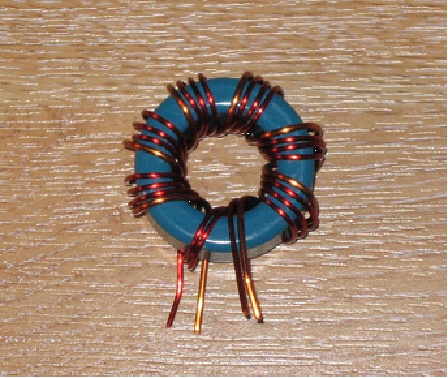 James (M3YOM) has just emailed me after discovering something worse than fitting 90 or so PL259s last week; it’s winding quadrifilar wound toroids. Pictured is a completed L1 winding for the 40m filter. He says that it’s a T130-0 core with 7 quadrifilar windings which should give around 3.96uH and there are two in the filter box he’s making from a kit supplied by Bob Henderson.
James (M3YOM) has just emailed me after discovering something worse than fitting 90 or so PL259s last week; it’s winding quadrifilar wound toroids. Pictured is a completed L1 winding for the 40m filter. He says that it’s a T130-0 core with 7 quadrifilar windings which should give around 3.96uH and there are two in the filter box he’s making from a kit supplied by Bob Henderson.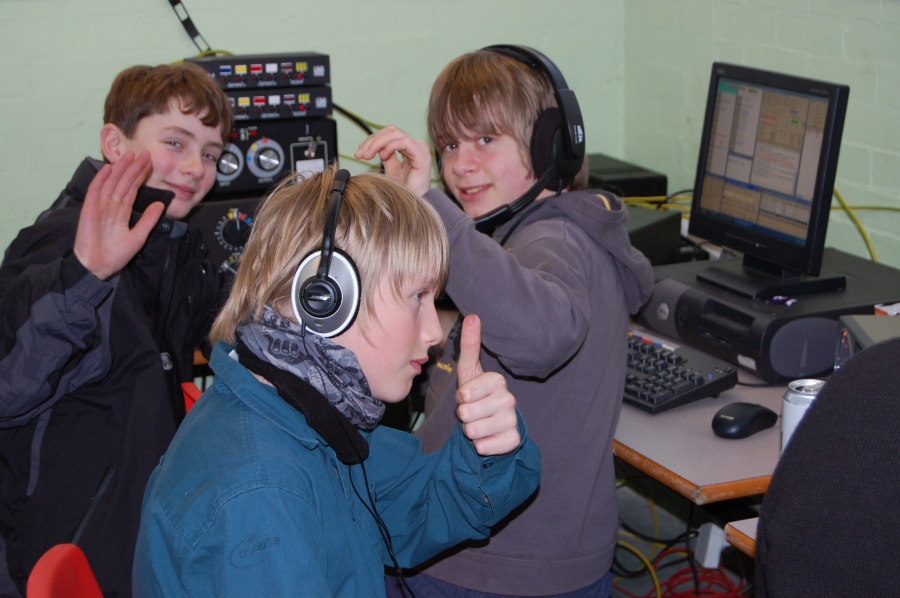 My thanks to Lee (G0MTN) James (M3YOM) Terry (G4MKP) and Aidan (M6TTT, Scout) for getting our new station on the air for a first-time-out on WPX.
My thanks to Lee (G0MTN) James (M3YOM) Terry (G4MKP) and Aidan (M6TTT, Scout) for getting our new station on the air for a first-time-out on WPX.